Revisited: Josh Strang, GNCC Winner
Late last year, Australia’s four-man World Trophy team clinched their second ISDE win in Chile. And before the South American champagne had time to dry on the Aussies’ seats, Motorcycling Australia (MA) had announced the team that would defend the crown at the Portugal-based International Six Day Enduro (ISDE) this November. Sadly, two of Australia’s ISDE-winning team members from last year – Josh Strang and Lyndon Snodgrass – were not selected. It’s probably fair to say that, on recent form, Snodgrass’ omission is understandable. But the contentious decision to leave Josh Strang on the sidelines has sure created some social media noise over the past couple of months. And while no one begrudges the selection of ISDE vet, Josh Green, and ISDE debutant, Luke Styke, we can understand Strang’s disappointment – with both the decision, and how poorly it was communicated.
So, we figured the least we could do was revisit the feature article we ran in Transmoto’s first issue, way back in mid-2010, when a 22-year-old Josh Strang had taken America’s GNCC series by storm, and was about to go on to win the thing. Enjoy…
In a parallel universe, Josh Strang sees himself as a pilot. His head turns to the sky whenever he hears one of the US Marine Corps AH-1W Cobras or CH-46 Sea Knight helicopters over Southern California’s Pala Raceway, as they shuttle between Camp Pendleton on the Pacific Coast and Marine Corps Air Station Yuma in the Arizona Desert. But the softly spoken 22-year-old from Inverell, New South Wales, is flying high in other ways nowadays, more than content with his current day job: the sole rider for Team FMF/Makita Suzuki Off-Road in the Can-Am Grand National Cross-Country (GNCC) series. Since first going to the US and getting his feet wet by riding a couple of rounds at the end of 2006, Strang has been at it full-time and shown steady improvement each year – eighth in ’07, third in ’08, second in ’09. Now, having won the first four rounds of the 2010 GNCC series, he seems poised to become champion. Whether or not he wins that coveted championship this year, the fact is that Strang has continued to prove the worth of Anzac off-road racers on the American scene; a legacy started by Geoff Ballard winning the AMA National Hare Scrambles Championship in 1984, before really picking up steam when Shane Watts won the GNCC crown in 2000. But instead of sticking with what works, Strang made a drastic change following the ’09 season. Rather than staying at his base in North Carolina – which is central to the GNCC circuit – he moved to Murrieta, California; a place better known as home to Pro motocrossers such as Nick Wey, Jason Lawrence, Justin Brayton and Brett Metcalfe. He no longer drives to GNCCs; he flies to each round – though there’s enough SoCal traffic during the week to give him plenty of seat-time in his van that still wears North Carolina license plates. Dramatic as it was, Strang’s change of scenery seems to be working for him, and it gave us the chance to catch up with him ahead of Round 5 of America’s premier off-road series.
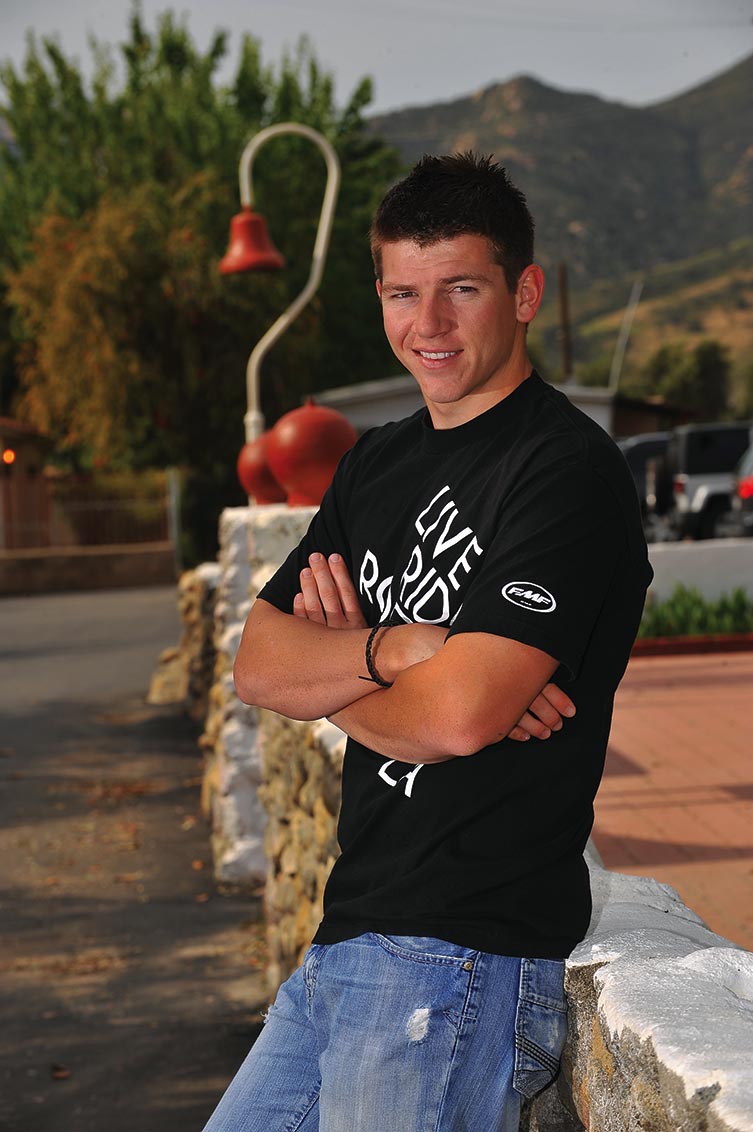
TM: Having won the first four GNCCs, you’re obviously having a stellar year. Is this the result of moving to California and concentrating on motocross training, or is there more to it than that?
JS: I think it’s a mixture. Once you’ve learned to ride in the woods (or trees), you never forget. If you hit one of those things, they’re not going to move and you’re going to end up in hospital or off the bike. I definitely think moving out to California was a good idea. At first, I was a little bit hesitant in packing up all my stuff and moving out here, but I got it all sorted and I’ve just been practising motocross. A lot! I haven’t practised a day in the trees since early January when I was up at Rodney Smith’s. So apart from the racing, I haven’t ridden in the woods at all. For some people, that’s strange and it might not work for them, but it works well for me. That’s what I like doing: I like practising motocross.
You’ve posted steadily improving results since arriving in the US, and do it by riding the same bike for the same team. Were you concerned that changing something drastic like your home base or training emphasis might backfire?
In ’06 and ’07, I was on the RM250 two-stroke, and then ’08, ’09 and this year, I’ve been on the RM-Z450 four-stroke. I moved around on the East Coast, from North Carolina to Ohio – where I was living in Ohio with [fellow GNCC racer] Jimmy Jarrett for a while – and back to North Carolina, before coming to California. For me, it’s all about finding somewhere that I can have fun.
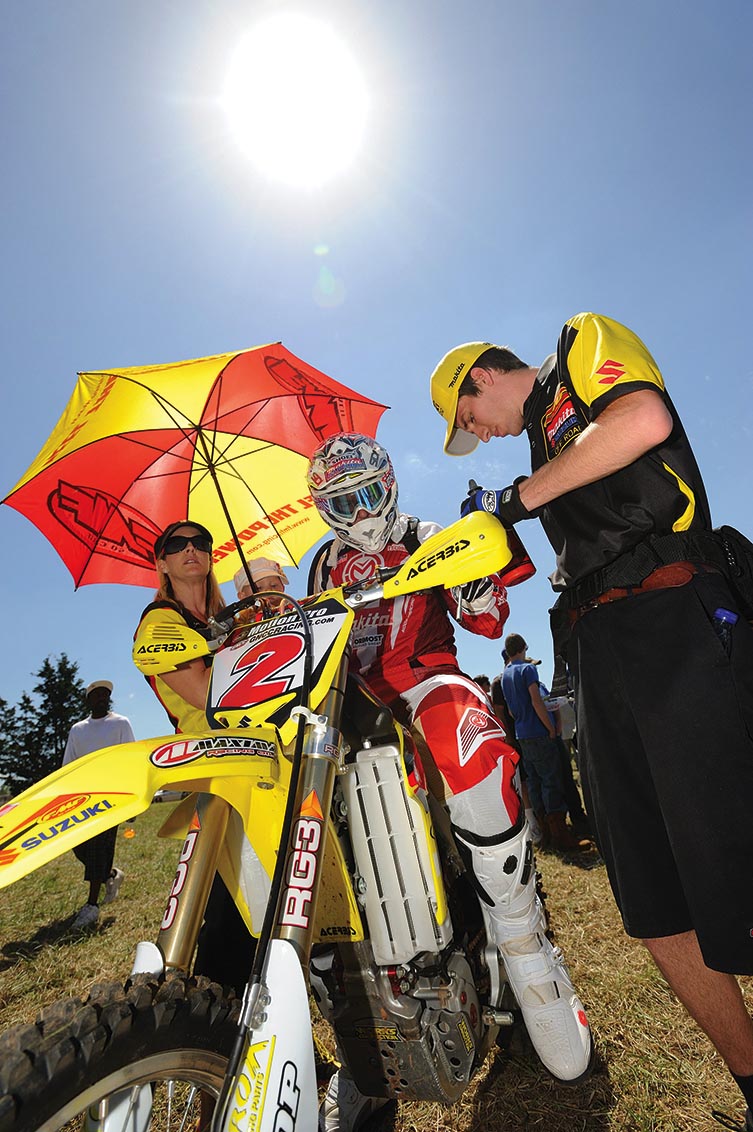
Why SoCal instead of Florida or Texas or somewhere else in the US where there is also plenty of opportunities to train like a motocrosser?
One reason is that Rodney Smith and my team manager Mike Webb live out here. Mike suggested it would be a good idea to come out here and moto. The tracks – and the people that you get to ride with at the tracks – are just unreal here in Southern California. There are practice tracks that are better prepped than the Australian MX Nationals tracks – and it’s during the week! It’s so different from back east where you’re riding on a dusty, worn-out moto track. Here, you go to a prepped track with 10 national-calibre Pros riding there. I mean, it can only help in the long run. I didn’t know anyone in Texas or Florida, so it would’ve been hard to start afresh there again.
In hindsight, did you head to America at the right time in your career?
I recently read an interview in an old magazine where Shane Watts said, “Strang should’ve stayed back home and honed some skills instead of jumping right in.” There was a stage in that first year where I was like, ‘What’ve I done? I probably should’ve stayed back home and raced another year’, but I’m happy I didn’t do it now. That first year in ’07 was okay for me. I kind of jumped in the deep end – I went from being a mechanic at Dad’s shop to racing for a factory team in a completely different country. It was definitely hard for me and tough to move away from home at that age, but I think it was the right decision because something could’ve happened in 2007 at home and maybe plans would’ve changed. Racing the GNCC is what I wanted to do. The opportunity came, and I took it. It was definitely hard work in the early days, but 2008 was better. Then last year was better again. This season has started off as good as it gets. It’s been stepping stones and hard work, but a very rewarding experience. I’ve had a few crashes and small injuries in my three seasons here, but nothing that’s kept me off the bike.
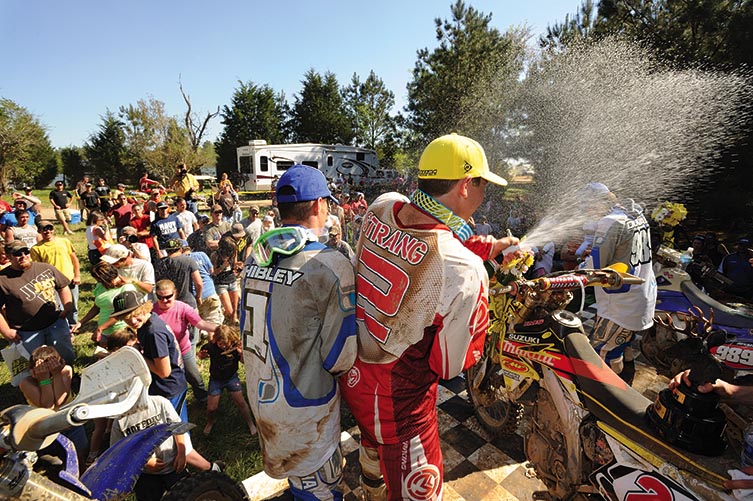
![]()
“I can’t call it a job, but I work hard at what I do. Riding’s my passion; it’s what I do. If I have a weekend off racing, I’ll go ride. If not a moto, I’ll go ride with friends.”
![]()
Critique yourself. When you first got to the States, what were your strengths and weaknesses?
Weakness: I wasn’t fit enough and I wasn’t used to the racing. I went from doing 10-minute sprints to three-hour races. Strengths? I probably didn’t have a lot of strengths. I came over and I could run inside the top 10, but I wasn’t inside the top three or four every weekend. But I never gave up, which was a good strength to have. Also, I know when I’m riding outside my comfort zone and when things could get ugly. I’ve always been like that, even as a kid. I was a slow learner, but I would never make stupid mistakes and put myself in that position to get injured. Sometimes it just happens and you get injured, but I’ve been pretty lucky. Nah, don’t call it luck – skill!
Have those qualities changed since that first season here?
Yeah! I think I’m now one of the fittest guys in GNCC. I work with Rodney and Lori Smith, mainly in the winter, and I do a lot of pre-season work, which pays off so much when it comes race time. So that’s one of the weaknesses gone. I don’t know what other weaknesses I have. We’ll see later in the season if having the points lead gets to me. So maybe it’s pressure, but I don’t think so. Strengths? My speed and, so far, my consistency. Which, for a long season and long races, is definitely important. Without sounding cocky, I’m yet to go as fast as I think I’m capable of in the four races I’ve won so far. I feel that the racing’s been … not easy, but just within the comfort level I can sustain. I think the next races in Tennessee and Pennsylvania will suit me. [Strang finished second and ninth in these two rounds, just as we went to print – Ed.]
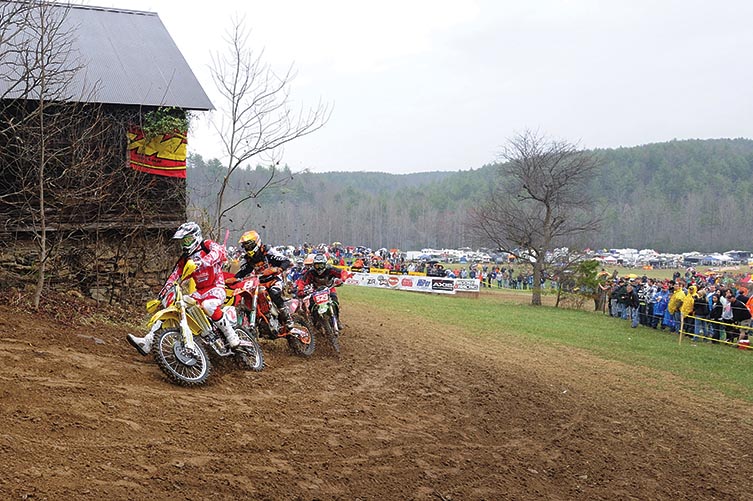
Does your new emphasis on motocross practice reflect a new reality for off-road racing? In other words, have GNCC courses become more like tree-lined motocross races?
You can’t trailride on the tracks any more. Ten years ago, I think it was more of a trail-type, tighter track, whereas now it’s beat to shit. They’ll have 800 quads on it Saturday, then a morning race that sometimes has 400 riders. If there’s good conditions, then there’s ruts and bumps. The GNCC tracks are probably rougher than any motocross track that I ride or race on. So that’s why I think it’s more like motocross than anything
SoCal’s rockstar lifestyle has distracted many talents from reaching their full potential. Were you concerned about that?
Lots of the young, motocross-type guys have big egos. They probably work hard and they get good results. But some of them, it does go to their head. So I was a little worried. I’m a pretty quiet type of person so I had to find good friends who weren’t going to lead me astray. I think I’ve got good people around me now. And I can’t call it a job, but I work hard at what I do. When the racing’s over at the end of the year I’ll have fun with those guys, but right now I’m focused on the main goal of winning races and the championship.
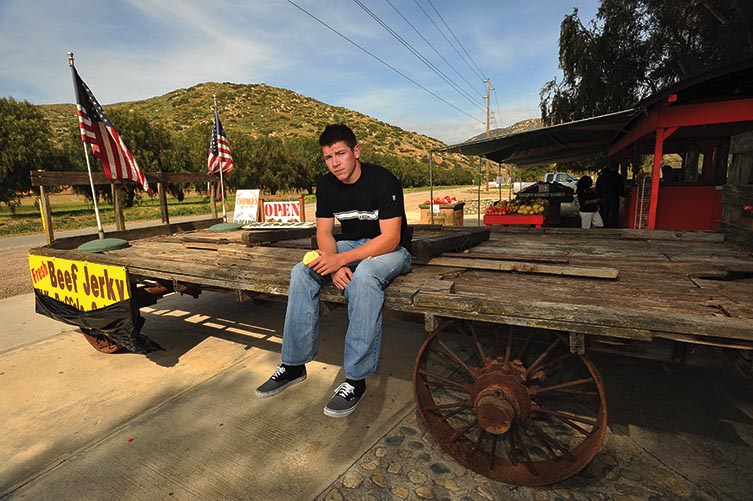
What does a typical race week consist of for you? And what about those rare non-race weeks?
Living in California and being able to ride prepped motocross tracks whenever “Strang has continued to prove the worth of Anzac off-road racers in America; a legacy started by Geoff Ballard winning the AMA National Hare Scrambles Championship in 1984.” Strang has come a long way since spannering at his old man’s workshop in Inverell, NSW. The wide, flowing, roughas-guts GNCC tracks are a different beast to what GB and Wattsy rode in the day. Strang’s traning on the world-class moto tracks of SoCal have seen his speed improve out of sight. “I can’t call it a job, but I work hard at what I do. Riding’s my passion; it’s what I do. If I have a weekend off racing, I’ll go ride. If not a moto, I’ll go ride with friends.” SPORT PROFILE 68 69 I want, I’ve been doing a ton more riding than I have ever done. And I’m having a blast doing it. I still go to the gym and do cardio and that sort of stuff off the bike, but I’ve been doing so much more riding – even a week before a race. I don’t know … I think it’s just because it’s so much fun for me to go to the track and practice with the guys. On a weekend off, I’ll go race at a local motocross or something. If I’ve had a couple of hard weeks, I’ll just have a weekend off and not ride at all. It’s a pretty normal motorcycle racing lifestyle: race, train, ride, eat and sleep.
Who maintains your practice bikes?
I’ve gotta do that! That’s the thing with riding so much more – my bike’s getting so much more beat up and worn out. I was working for dad as a mechanic for almost three years, so I can change tyres, air filters and oil. Once I’m done at the gym and done riding in the afternoon, working on my bike gives me something to do. It keeps me occupied, keeps me sane and probably keeps me down to earth. If I had a practice-bike mechanic, I’d be a full rockstar!
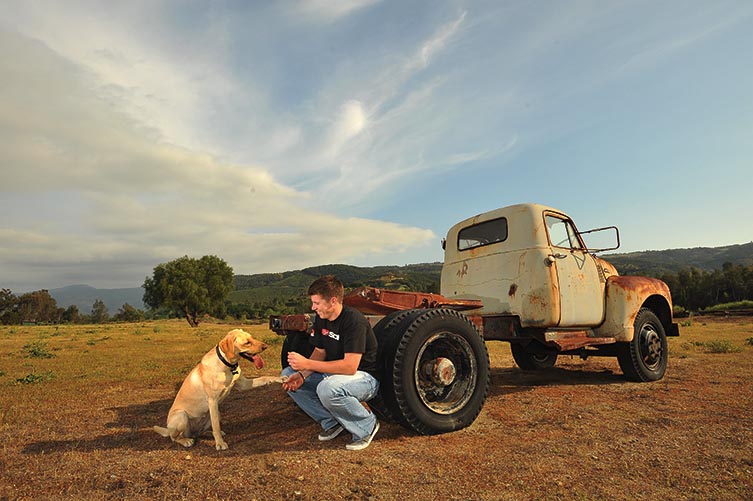
What do you do for fun away from bikes?
Ride! It’s not sad because that’s my passion; that’s what I do. If I have a weekend off racing, I’ll go ride. If not a moto, I’ll go ride with friends. I love it so much, and I think that’s what has kept me still racing and having fun. Other than that, I go cycling. But then again, that’s training. Hey, that’s just what I like doing
Is living away from Australia still difficult?
I still keep in touch with family and good friends. As I was racing so much of the time in Australia, I only had good friends anyway. As the guys at school would all go partying while I’d go to racing, I was never really close to many people from school. So it’s not that difficult for me now. Sometimes I’ll miss friends and family if I’m having a downer week, but the majority of the time I’m having fun here and I don’t miss Australia too much.
What was the bigger change for you: moving from Oz to America, or moving from the East Coast to SoCal?
Probably moving from the East Coast to California, because I had a base there and a bunch of crap I’d accumulated over three years. So I had to pack it all up and move out. I was stressed out at the end of last year trying to decide what I wanted to do. When I moved from Australia to the USA, I just packed two suitcases and flew out; it was that easy. I flew out with the money I had left in the bank account and that’s about it. It was sad leaving Mum and Dad, but moving into a house with Rodney and Lori Smith made it so much easier. Rodney really took me under his wing.
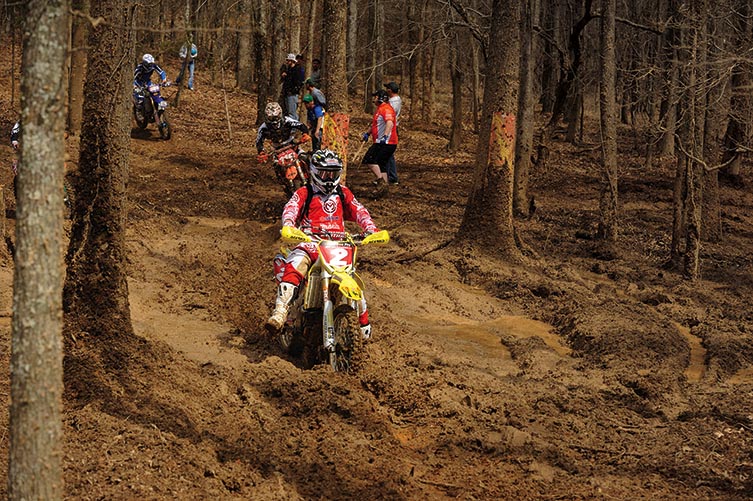
![]()
“The GNCC tracks are beat to shit and probably rougher than any motocross track that I ride or race on.”
![]()
How are you coping with being a frequent flyer?
It’s actually not that bad. In the long run, it works out about the same as driving. If I was on the East Coast, I’d have to drive to all the races. Apart from the three Carolinas, all the races were about five hours away, so it was about the same as a plane flight. Another thing about driving is when I got back, I’d have to clean the van – inside and out – and all the stuff that I would’ve brought back from the race. Now I can leave helmets and boots and kneebraces in the truck and my mechanic, Shane Nalley, cleans it for me. Flying means less stuff to clean and less stuff to worry about. I just fly in, race and fly home. I’ll upgrade to the occasional first-class seat if I have the opportunity. But it’s only an upgrade, so it’s cheap.
What don’t people know about you? Six toes? Hooked on Dancing with the Stars? Donna Summer songs on your iPod?
I like to play Playstation. Last year in my North Carolina apartment, I was by myself and I didn’t have a TV. It’s going to sound nerdy, but PS3 came out and I’ve always been a little bit of a gamer, so I bought it and I ended up having PS3 and watching movies. Seven months with no TV! I’ve got a TV now, but I never get around to watching it. Over here there’s, what, 80 channels? About 75 percent of TV is ads – it’s a waste of time anyway. I like watching Supercross and NASCAR. Actually, I also watch The Military Channel a fair bit because it’s the only one I know that’ll have something interesting on.
The Military Channel? So what kind of music do you listen to?
Back home, I used to be a country fan when I was a kid, but as a teenager, I kind of grew out of it; didn’t really like it. Here in the States, country’s more modern and I’ve actually started listening to it again. I listen to everything, but country is probably the main one on the radio.
What’s Whibley Think?
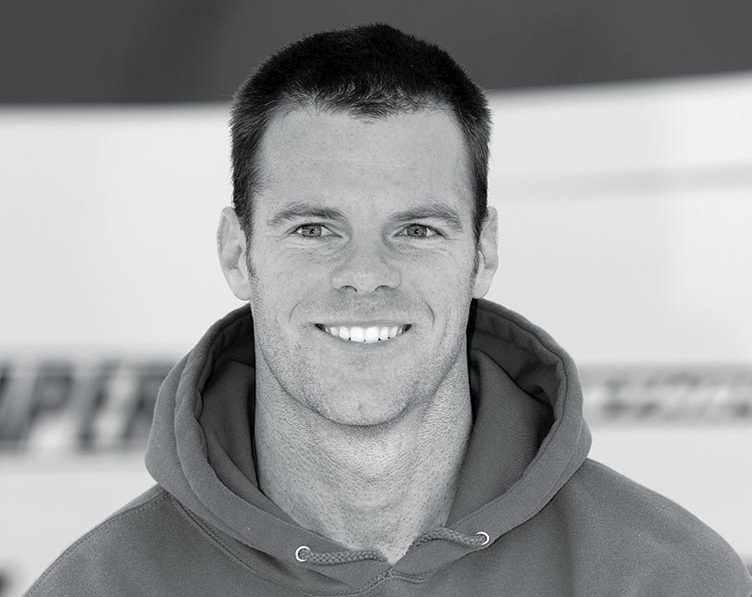
Josh’s strengths?
He’s very fast and his strength has improved each year. In ’07, he was already fast and got a podium. The next year, he was battling for second place. Now, he’s got a good overall race package and he’s got the whole Suzuki team behind him. And that’s extra incentive to win.
Josh’s weaknesses?
It’s hard to say, really. He’s a pretty well-rounded rider, and he’s got good moto speed as well. The only weakness I can see is that he’s Aussie!
What people don’t know about him?
I wish I had some dirt to wind Strang up. I could say he needs to work on his hillclimbing skills after he parked up at the bottom of the hill at the Steel Creek race. That race was stopped because the lead three couldn’t get up it, but I got up and took the chequers. Then they called the race off a lap early and gave the win to Josh. If Josh doesn’t slow down, that might be my only claim to beating him this year.
What’s Wattsy Think?
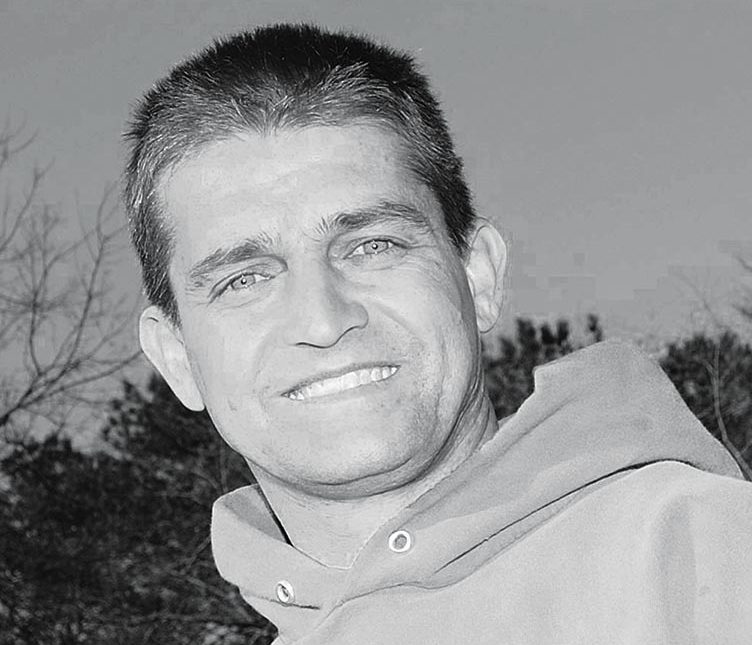
Josh’s strengths?
His youth, physical size and ability to handle the bigger bike. He’s keeping racing and training fun, not a job, so that’s real good. He doesn’t put a lot of pressure on himself, and that leads to a longer racing career. Obviously, he has really good skills on the motorcycle, too. He’s living the dream that we all wish we could go back and do again.
Josh’s weaknesses?
He’s a very good all-around package with no glaring weaknesses. He needs to be a little stronger in mud races, but he’s doing real good at them already. It just complements his ability to ride in the dry. Every year, he gets stronger and faster.
What people don’t know about him?
Well, he doesn’t seem to give up much information about the girls he’s chasing. Leaves the boys hanging a little bit. Maybe he’s nervous because when he first came over here, we gave him a hard time about one particular old lady.
What’s Knighter Think?
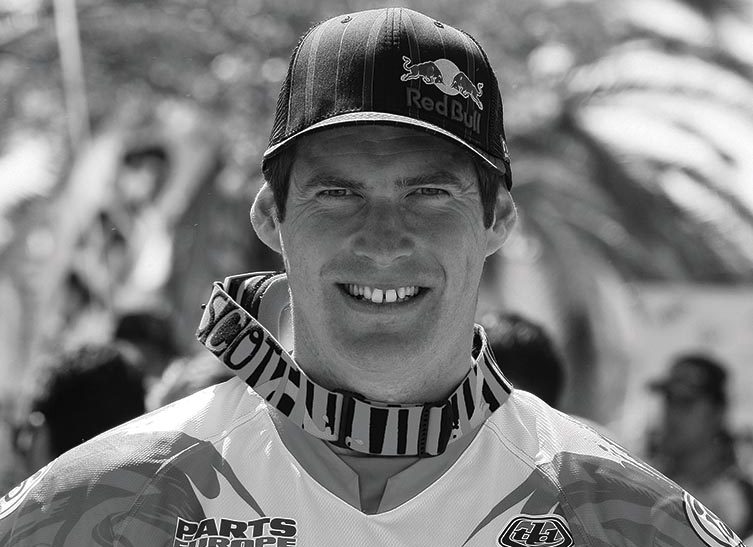
Josh’s strengths? Josh is young and fast and a great cross-country racer. I got on really well with him while I was racing in the States a couple of years ago. He’s down to earth and serious about his racing, but I also had a good laugh with him and Glenn Kearney at the Aussie 4-Day a few years back.
Josh’s weaknesses? He’s fast in all conditions and doesn’t have any weaknesses really. He is young still, so from time to time his slight lack of experience might stop him from getting a better result.
What people don’t know about him? They don’t know that, when I was in the States, I always said Josh’d be the rider to beat. And I think that he will be for a good few years. He’s not like someone like Charlie Mullins who wins one race then does shit at the next. Josh is always there, giving it everything. I can imagine that he’s really starting to believe in himself now. It’s great to see him doing so well.
Related Content
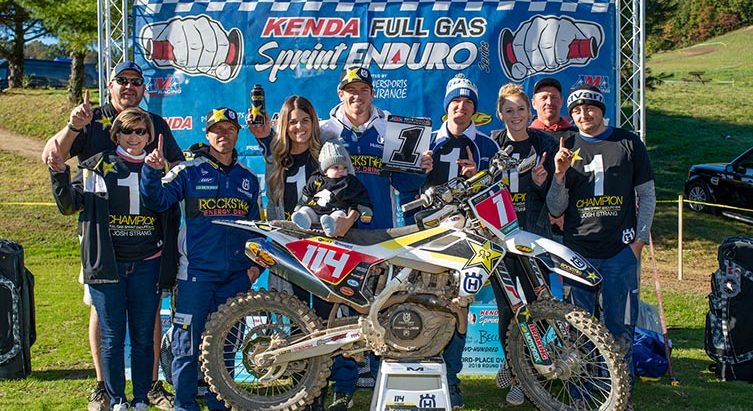
JOSH STRANG: FULL GAS SPRINT CHAMPION
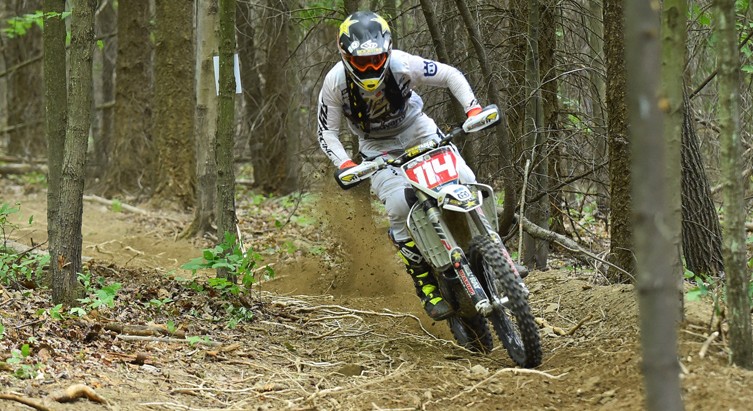
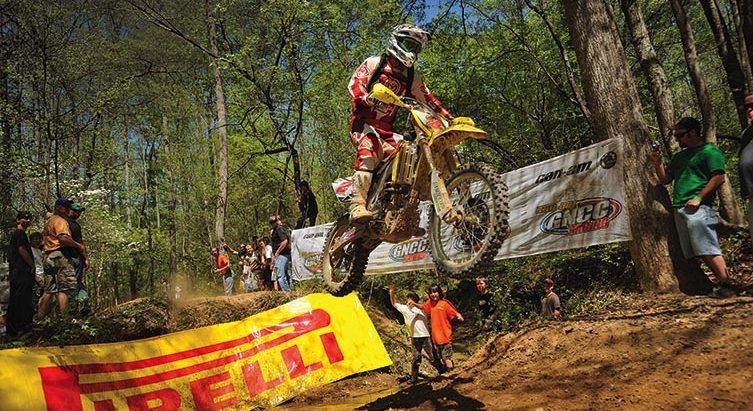







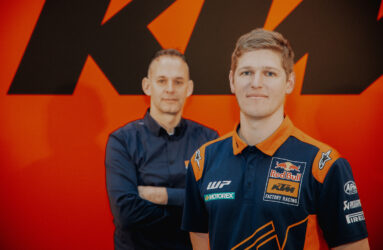
Be the first to comment...